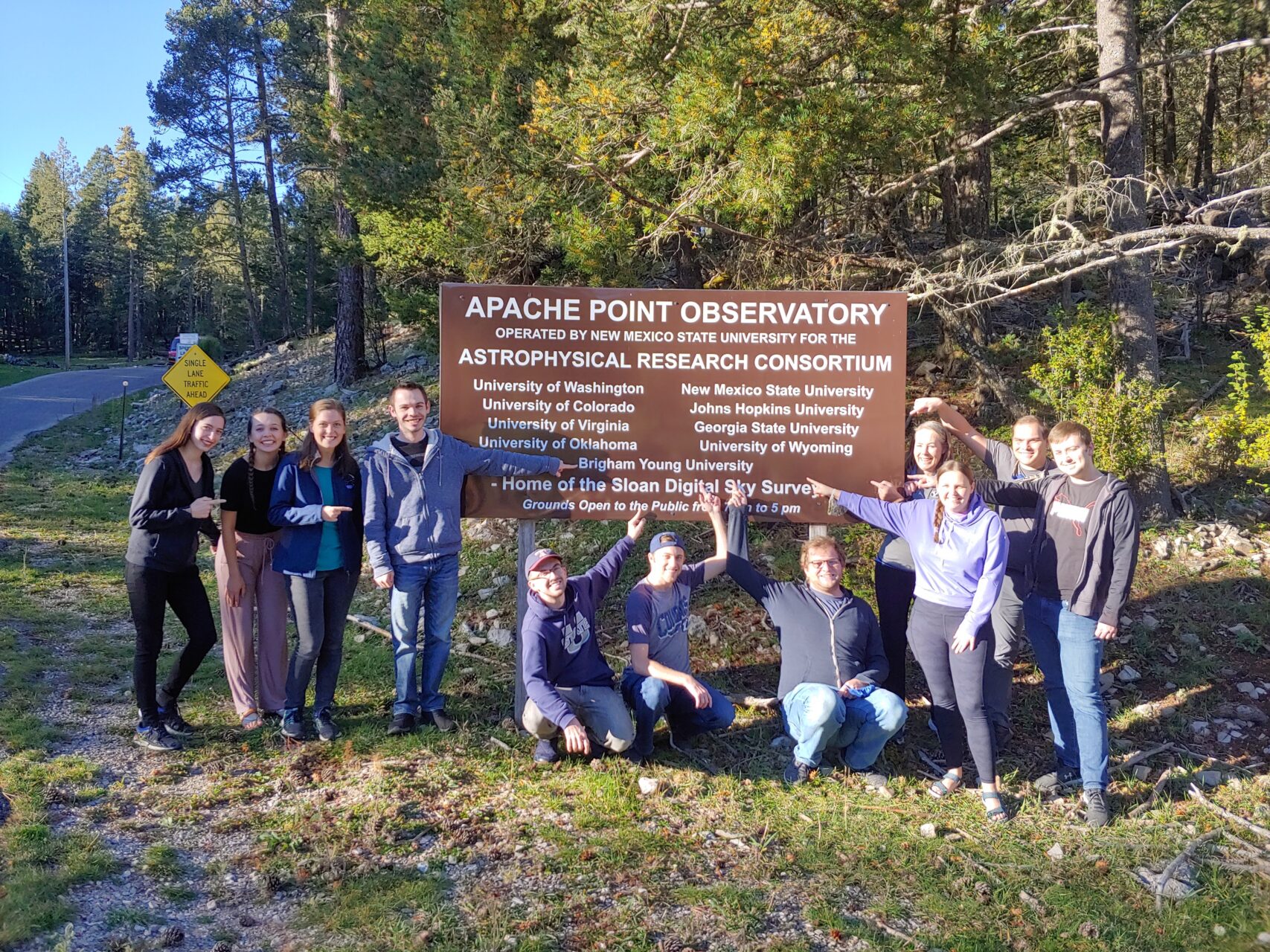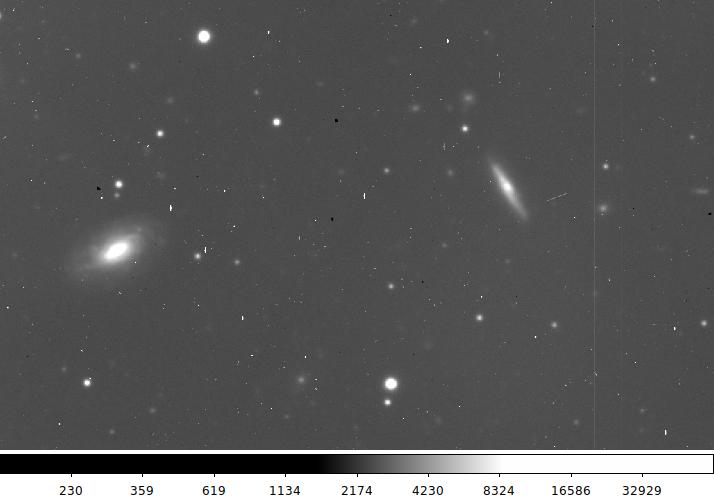Students and faculty from theBYU Astronomy and Physics department captured images from space at an observatory in New Mexico to research explaining the evolution of the universe.

Physics and Astronomy Department students and faculty traveled in early October to the Apache Point Observatory in Sunspot, New Mexico. Seven graduate students and three undergraduate students were able to tour and receive training on how to use the 3.5 meter telescope. This training allowed them to easily capture images remotely from their computers and use them for research projects conducted by department professors.
Brown Dwarfs Spectral Imaging Project
Denise Stephens received her masters and Ph.D. from New Mexico State University and was one of the trip’s advising professors who is conducting a research project on brown dwarfs. She specializes in the study of brown dwarf atmospheres and she captured spectra images on the trip.

Brown dwarfs are objects whose masses fall between those of the heaviest gas planets and the lightest stars. These objects form like a star, but do not have enough mass to ignite hydrogen fusion in the core which is why they are sometimes called failed stars.
Undergrad student Conner Scoresby and graduate student Savanah Turner worked alongside Stephens in the brown dwarf project, using spectra imaging to study the physics of the atmosphere as the clouds drop lower in the atmosphere.
“We’ve been able to take data remotely from using this telescope for a while,” Turner said. “But it was super helpful to be able to go in person and actually get to see this telescope that is giving this amazing data.”
Through spectra imaging of brown dwarfs, Stephens, Scoresby and Turner could identify the absorption features of radiation, or light, coming from brown dwarfs. Stephens said that from these images, they could see how much of the radiation is being absorbed by the molecules in the atmosphere, absorbed by the clouds and how much of it is escaping through holes in the clouds. These gaps of light can be seen through imaging.
“There’s lots of brown dwarfs out there, but we’re targeting the question of what is happening to the clouds,” Stephens said. She said that as the clouds clear out of the way they can understand the physics and the chemistry of what is happening to the atmosphere.
Scoresby observes the trends of brown dwarfs and reduces the data that is received from the telescope. Turner then uses codes that fit the data to models to be able to understand what is occurring in the atmosphere. They can then apply this data to other planets to better understand planets orbiting other stars.
“If we can understand the mechanisms that are at play, it will give us better data points and more information that we can apply towards modeling the atmosphere of giant planets,” Scoresby said.

Kuiper Belt Observation Project
The BYU group also examined objects in the Kuiper belt. The Kuiper belt is a ring of icy objects beyond the orbit of Neptune; Pluto is one of these objects. Ben Proudfoot, the graduate student working on this project, used the telescope to identify objects that are part of the Haumea family.
The Haumea is a large egg-shaped object that is part of the Kuiper belt and is believed to have been hit in the past and survived the collision. Proudfoot observed the broken-off pieces from Haumea by examining the color of the object. The blue color indicates fresh ice from a recent hit while most objects in the belt are red as they weather. Proudfoot said that the color and location of the objects tell a lot about the solar system.
“We are trying to figure out how the solar system formed and evolved by looking at the icy debris. Where these debris are can tell us about how the solar system formed and how all of the processes of evolution took place,” Proudfoot said.
Surface Photometry of Galaxies Project
Aleksandr Mosenkov, who has a Ph.D. in physics and astronomy from Saint Petersburg State University, managed the third research project: surface photometry of galaxies. Mosenkov’s area of research is galaxy formation and evolution based on exploring surface photometry, kinematics and using simulations of galaxies to help understand the formation and evolution of galaxies.
He used different filters in the telescope to look at the morphology of the galaxies. These images permitted him to see the nucleus and the structure of three different low surface brightness galaxies.
“I know there is something special in them,” Mosenkov said. “I presume that there are many galaxies which have some interesting features and there is no mention in scientific literature.”
He said he wants to collect greater observation samples of galaxies to publish research that can help further research of other galaxies besides the Milky Way.
Stephens said there are a lot of questions in science and it is important to understand that science is ongoing. Through research experiments like these, students and professors can create hypotheses and collect data to answer those questions.

“There is no such thing as ‘we know everything.’ For astronomy, it’s really about trying to understand the evolution of the universe,” Stephens said. “In a lot of ways, the questions we pursue all kind of tie it back to where did we come from and the origin of the earth and the solar system.”







